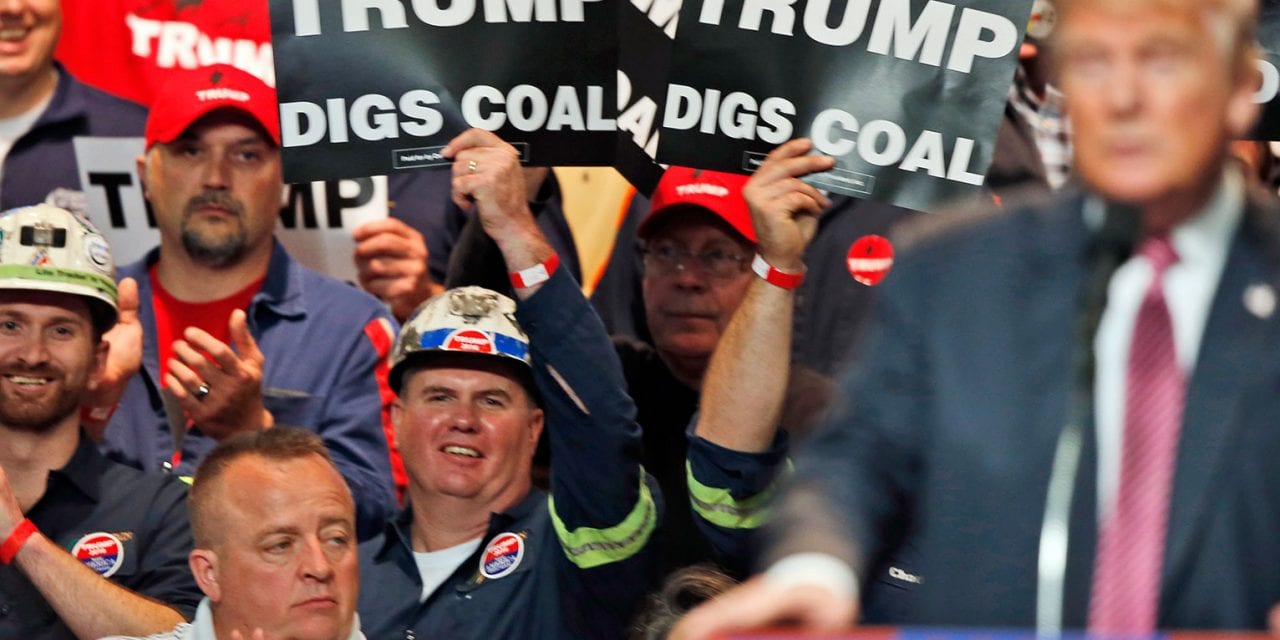Rolling back the Obama-era “Clean Power Plan proves to be a necessity
Repealing the Clean Power Plan will benefit all Americans
By Marlo Lewis Jr.
Environmental Protection Agency Administrator Scott Pruitt’s proposal to repeal the so-called Clean Power Plan is the most notable step President Trump and his team have taken to date to end the Obama administration’s unlawful and economically destructive war on affordable energy.
Although there is no shortage of policy reasons to repeal the Clean Power Plan, which promises lots of economic pain for no discernible environmental gain, Pruitt is proposing repeal chiefly because the plan exceeds the legal authority delegated to the agency by Congress.
The EPA issued the Clean Power Plan under the Clean Air Act’s Section 111(d). The EPA’s consistent regulatory practice over the previous 45 years, the statutory text, and the legislative history all compel the conclusion that the EPA’s power is limited to setting emission standards that facilities can affordably meet through technological or operational modifications.
The Obama administration refused to accept that limitation. It wanted big reductions in power plant emissions of carbon dioxide like those in the cap-and-trade schemes that Congress had previously rejected. But CO2-capture technology cannot be retrofitted at a reasonable cost onto current fossil fuel power plants. So the Obama administration reimagined Section 111(d) to authorize the EPA to set emission standards too stringent for any existing coal or natural gas power plant to achieve, while allowing the owners to comply by reducing output and investing in new renewable generation instead.
This obvious government favoritism punishes owners and operators of coal and natural gas power plants. In addition, the EPA interfered with states’ authority to manage their respective power sectors. This is why the Clean Power Plan is really a clear power grab. Congress never gave the EPA the authority to transfer wealth from politically disfavored power generators to special interests or to restructure state electric power sectors.
Three bizarre consequences further highlight the Clean Power Plan’s illegality. First, although Section 111(d) deals solely with “existing” facilities in specified industrial source categories (in this instance, fossil fuel power plants), compliance would supposedly be achieved by investing in “new” wind and solar facilities outside the source category.
Second, the plan’s “performance standards” are actually nonperformance mandates, compelling owners of fossil fuel power plants to produce less power or simply shut down. Third, the plan imposes tougher emission standards on existing sources than the corresponding and prerequisite new source rule imposes on new sources, which flouts common sense. As the repeal proposal explains, “the costs of controlling emissions from existing facilities will ordinarily be greater than those for control of new sources.”
Although most people don’t like bureaucratic power grabs, they typically like job-killing regulations even less. The Obama EPA projectedrelatively small job losses and electricity rate increases from the Clean Power Plan, but outside experts disagree. The Heritage Foundationestimated the plan would reduce annual employment by 479,000 jobs in 2027, reduce cumulative GDP by hundreds of billions of dollars between 2020 and 2030, and reduce cumulative household income by more than $10,000. NERA Economic Consulting estimated rate increases of 11 to 14 percent from 2022 to 2033.
However, the economic impacts of the first plan compliance period are almost beside the point. The plan is a framework empowering the EPA to continually tighten the regulatory screws for decades to come. So, it’s not the first compliance period targets, but the prospect of increasingly draconian curbs on coal and gas power plants that makes the plan toxic to the domestic energy renaissance on which U.S. industrial competitiveness depends.
The Obama EPA claimed the Clean Power Plan would deliver up to $95 billion in climate change mitigation benefits by 2030, but that’s flimflam. The EPA’s own climate model estimated the plan would avert less than 0.02 degrees Celsius of global warming by 2100 — too small an amount to have any discernible impact on weather patterns, polar bear populations, or anything else people care about. The climatic effects in 2030 would be even smaller.
The Clean Power Plan is an unlawful power grab that forces American consumers to endure higher electric rates, fewer jobs, and a less competitive economy — and all for no detectable climate benefit. In pursuing repeal, the administration has clearly made the right call.
Marlo Lewis Jr. is a senior fellow in energy and environmental policy at the Competitive Enterprise Institute.



















